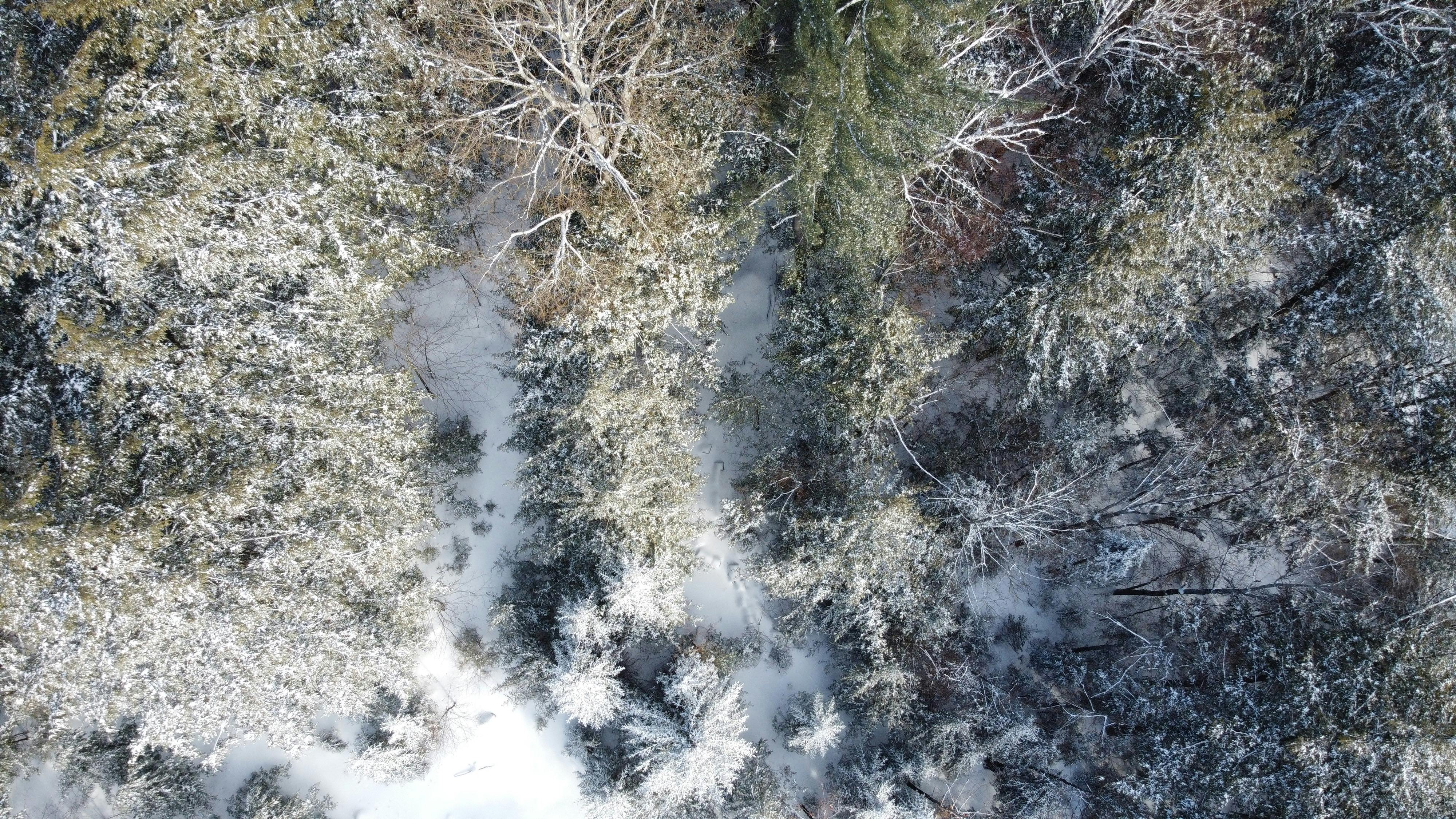Fruit trees provide a valuable source of food for both people and wildlife. However, when temperatures drop below freezing, it can be difficult to keep fruit trees from freezing. Fortunately, there are several steps you can take to protect your fruit trees from the cold weather and prevent them from freezing. In this article, we will discuss how to keep fruit trees from freezing and the best ways to protect them during cold weather.Before the cold weather arrives, it is important to prepare trees for winter. Trees should be watered deeply at least once a month throughout the autumn, and mulch should be added to the soil around the tree to help retain moisture. Once the ground freezes, cease watering trees. Prune dead or diseased branches as well as any branches rubbing against each other. Wrap the trunks of young trees with burlap or other protective material to prevent sun scald and frost damage. It is also important to inspect trees for signs of insects or disease and treat accordingly.
Wrapping Trunks in Winter
The winter season can be harsh on the trees in your yard. Not only will the cold weather cause damage to their leaves and branches, but the trunks of your trees can be affected as well. Wrapping trunks in winter is a simple way to protect them from the cold weather and prevent damage. It is an easy task that doesn’t require any special tools or materials, and it can make a big difference in keeping your trees healthy during the colder months.
Before you begin wrapping trunks, it’s important to inspect the tree for any signs of disease or damage. If you notice any signs of disease or damage, it is best to contact a certified arborist who can help you diagnose and treat the problem before wrapping the trunk. Once you have inspected your tree, you are ready to begin wrapping its trunk.
You will need some kind of protective material such as burlap or heavy plastic sheeting. Start by wrapping the base of the trunk with one layer of material and then working your way up in sections until you reach the top of the tree. Make sure that each layer is tightly wrapped so that no gaps are left uncovered. Once all layers are applied, secure them with tape or ties so they don’t come loose during windy conditions.
It is important to remember that wrapping trunks should only be done during colder weather when temperatures dip below freezing for extended periods of time. Wrapping too early or too late can cause more harm than good by trapping moisture against the bark and leading to rot and decay. Also, be sure to remove all wrappings after winter has passed as they can trap heat and cause sunscalding on sunny days.
Wrapping trunks in winter is an easy task that can help protect your trees from cold weather damage. Make sure to inspect your tree for signs of disease first, use appropriate materials for wrapping, and remember not to wrap too early or too late if you want your tree to stay healthy throughout wintertime!
Building Windbreaks Around Trees
Windbreaks are structures, such as hedgerows, walls, or fences, used to reduce the effects of wind on a certain area. When planted around trees, windbreaks can help protect them from strong winds and prevent them from becoming damaged. Windbreaks also help to reduce the amount of water lost from the soil and reduce soil erosion caused by strong winds. Building a windbreak around trees can be an effective way to keep them healthy and thriving for years to come.
The first step in building a windbreak is to determine the size of the area that needs protection. This will determine how many trees need to be planted in order to form the windbreak. It is important to choose species that are native to your area and are tolerant of windy conditions. Once the species have been chosen, they should be planted in a staggered pattern so that the trees form a solid barrier against the wind.
Once the trees have been planted, it is important to provide them with proper care and maintenance. This includes regularly pruning and trimming branches in order to keep them at a manageable size and shape. Additionally, it is important to water and fertilize regularly in order for the tree roots to remain healthy. Proper care will ensure that your trees remain strong and resistant against strong winds.
Finally, it is important to protect your newly created windbreak from damage caused by animals or humans. This can be done by installing fencing or other barriers around the perimeter of your windbreak in order to keep out unwanted visitors. Additionally, it is important to check on your trees regularly for any signs of damage or disease so that any issues can be addressed immediately. By following these steps, you can ensure that your newly built windbreak will last for many years.
Installing Heat Sources Around Trees
Installing heat sources around trees is an important part of keeping them healthy. Trees need a certain amount of warmth to thrive, and providing that can be done in a number of ways. Some of the most popular methods include using mulch, adding insulation, and installing heat sources such as electric blankets or ground cables. Each method has its own advantages and disadvantages, so it’s important to consider your location and budget before deciding on the best option for your trees.
Mulch is one of the simplest and most cost-effective ways to provide warmth for trees. It helps retain moisture in the soil, keeps weeds at bay, and provides insulation against extreme temperatures. Mulch can be purchased in bags or bulk from garden stores or online suppliers, although it’s important to check the quality before purchasing. In addition to providing warmth, mulching also helps control erosion and improves soil fertility.
Adding insulation is another great way to keep trees warm during cold periods. This can be done by wrapping them in blankets or using bubble wrap around their trunks and branches. This provides a layer of protection against the cold while also helping retain moisture in the soil. Insulation should always be checked regularly as it can break down over time due to exposure to sunlight or rainwater.
Finally, installing electric blankets or ground cables around trees is another way to keep them warm during cold weather periods. These devices work by providing a steady flow of electricity underneath the tree’s roots which helps keep them at an optimum temperature for growth. Electric blankets are relatively inexpensive but require regular maintenance as they are prone to wear and tear over time due to exposure to water and other elements. Ground cables are more expensive but last longer than electric blankets if properly maintained.
Installing heat sources around trees is an important part of keeping them healthy during cold weather periods. Choosing the right method for your location will depend on factors such as budget and whether you prefer something more permanent like insulation or something more temporary like an electric blanket or ground cable system. Ultimately, whichever method you choose should help provide your trees with the warmth they need for optimal growth throughout any season!
Mulching Trees to Protect Roots
Mulching is an important part of proper tree care and maintenance. It helps protect trees from pests, diseases, and extreme weather conditions. Mulch also helps retain moisture in the soil, which is essential for healthy tree growth. A layer of mulch around the base of a tree can help protect the roots from extreme temperatures, keep weeds away, and help retain soil moisture. It is important to apply mulch in the right way to ensure that it has its desired effect.
When mulching around a tree, it is important to create a “doughnut” shape with the mulch. The mulch should be spread in a wide circle around the base of the tree with none directly up against the trunk. This will help prevent insects and other pests from coming into contact with the bark and causing damage or disease. Additionally, this will help keep roots cool in hot summer months by providing insulation from direct sunlight.
It is best to use natural organic mulches such as wood chips or shredded bark when mulching around trees. These materials will break down over time, enriching the soil with nutrients as they do so. Synthetic materials such as plastic sheeting should not be used as they can trap heat and cause root damage by drying out the soil too quickly. When laying down mulch, it should be spread evenly at a depth of two to four inches and kept away from any structures such as buildings or walls that may reflect heat onto nearby trees.
By following these simple steps you can ensure that your trees get all of the protection they need while also helping them thrive through all seasons!

Pruning Fruit Trees Before Winter Sets In
Pruning fruit trees before winter sets in is an important part of ensuring that the trees remain healthy and produce a plentiful harvest. Pruning helps to maintain the shape of the tree and promote vigorous growth, while also eliminating dead or diseased branches. Pruning can also help to reduce the amount of fruit that is produced, allowing for more space for larger, healthier fruits. The best time to prune a fruit tree is during late summer or early fall, just before winter sets in.
When pruning a fruit tree, it is important to make sure that all unnecessary branches are removed. This includes any broken or dead branches as well as any branches that may be growing in an unproductive direction. It is important to make sure that all cuts are made cleanly and at a slight angle away from the center of the tree trunk. This will help ensure that water and nutrients are able to reach all parts of the tree more easily.
When pruning a fruit tree, it is important not to remove too much of the foliage at once, as this can cause stress on the tree and reduce its ability to produce healthy fruits. It is best to start with removing any broken or diseased branches first and then gradually work on thinning out other sections of the tree. When thinning out a section of the tree, it is important not to leave any large gaps between branches, as this can cause air pockets which can lead to disease or pests infesting the area.
Finally, once all necessary pruning has been completed it is important to inspect all cuts made on the tree for signs of disease or infection such as discoloration or oozing sap from around the cut area. If signs of infection are present then it is best to treat these areas with an appropriate fungicide before winter sets in. This will help ensure that your fruit trees stay healthy throughout winter and into spring when they will begin producing flowers and eventually delicious fruits!
Fertilizing Trees in the Autumn Months
Fertilizing trees during the autumn months is a great way to ensure that they stay healthy and vibrant. Autumn is the perfect time to fertilize trees as they are beginning to prepare for winter and will need extra nutrients to sustain them through the cold season. Applying fertilizer during the autumn months also helps trees build up their root systems, which will help them absorb water more efficiently during the winter months.
When selecting a fertilizer for your trees, it is important to choose one that is specifically designed for trees. Many lawn fertilizers are not suitable for use on trees as they contain too much nitrogen, which can cause damage to their roots and leaves. It is best to consult with a local nursery or gardening center for advice on what type of fertilizer would be best for your particular tree species.
When applying fertilizer, it is important to follow all of the directions on the label carefully. Make sure that you spread it evenly around the base of each tree and avoid getting any on its leaves or bark as this can cause damage. If you are using granular fertilizer, you may need to water it in after application in order for it to be effective.
After fertilizing your trees in autumn, make sure that you keep an eye on them throughout the winter months, especially if there have been any significant changes in temperature or rainfall levels. If you notice any signs of distress such as wilting leaves or browning branches, then be sure to take action quickly and provide them with additional care as needed.
By taking the time to properly fertilize your trees during autumn, you can help ensure that they remain healthy and strong throughout winter and beyond!
Utilizing Insecticides and Fungicides to Protect Trees
Protecting trees from pests and diseases is essential for their long-term health and survival. The use of insecticides and fungicides is one of the most effective ways to combat these issues. Insecticides are used to kill or control insects that feed on trees, while fungicides are used to prevent fungal infections that can cause leaf spots, blights, and other plant diseases. Both insecticides and fungicides can be applied directly to the foliage or soil around a tree, depending on the situation.
Insecticidal sprays are best applied when there is an infestation of bugs on a tree. Before applying any kind of pesticide, it’s important to identify the pests that are present. Different types of insects require different treatments, so it’s important to find out what type of insect is causing the problem before applying any kind of pesticide. Once a pest has been identified, an appropriate insecticide can be selected and applied according to the instructions on the label.
Fungicide applications should also be targeted to specific fungal infections. Different fungi require different treatments, so it’s important to identify which type of fungus is attacking a tree before using any kind of fungicide. As with insecticides, it’s necessary to read and follow all instructions when using a fungicide in order to ensure safe application and proper results.
Insecticides and fungicides should only be used as a last resort for protecting trees from pests and diseases. It’s always best to try other methods first, such as removing infected branches or providing additional water or fertilizer for stressed trees. If these methods don’t work, then pesticide applications may be necessary in order to protect the tree from further damage or death.

Conclusion
Fruit trees can easily be damaged by freezing temperatures, so proper care should be taken to prevent this from happening. By using a combination of preventive measures such as winterizing the tree, wrapping it in burlap, or covering it with a frost cloth, you can ensure that your fruit tree will remain healthy and productive in the cold months. Additionally, planting your fruit trees in a sheltered spot and mulching them to help regulate soil temperatures are also great ways to protect them from extreme cold. Taking proactive steps will ensure that your fruit trees endure even the coldest of winters.
Overall, protecting your fruit trees from freezing temperatures is essential for their health and productivity. By following these steps, you can ensure that your trees make it through the winter unscathed and ready to produce delicious fruit for years to come.



